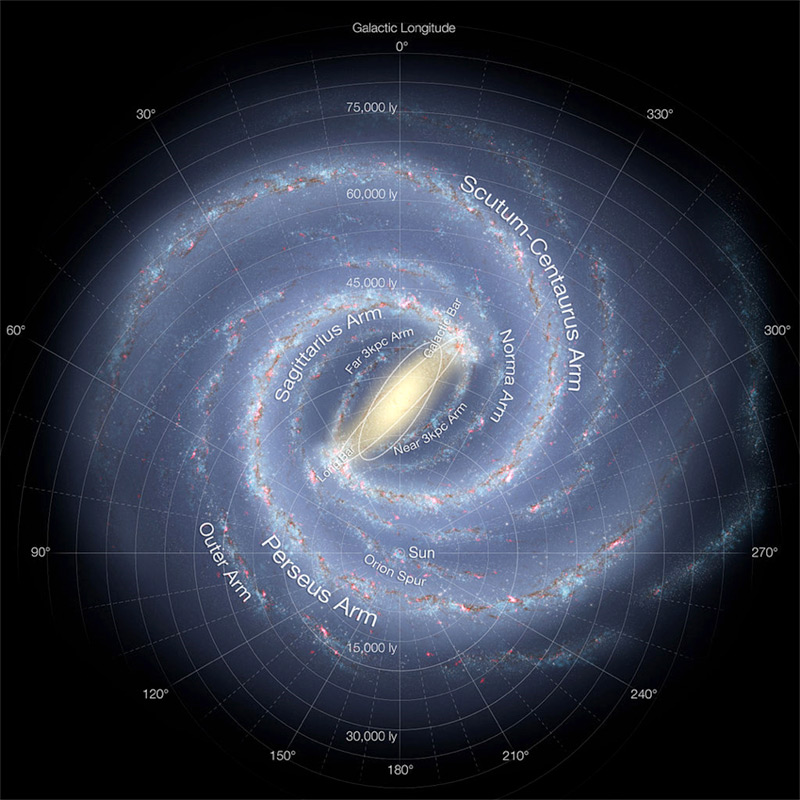14.6: Milky Way Galaxy Satellites
- Page ID
- 244376
Milky Way Galaxy Satellites
Our galaxy is 100,000 light years in diameter, that is, across the disk. And it is 1,000 light years wide – “thick.” Think of spiral galaxies like a Frisbee in shape — thin, flattened discs.
The Sun is 28,000 light years from the Galactic Center. From our position within the Milky Way Galaxy, it is challenging to study the Milky Way Galaxy due to the Interstellar Medium. Remember that spiral galaxies are dusty; the Milky Way Galaxy is “dusty” and we cannot see through the Interstellar Medium. We are able to look through the Milky Way Galaxy using radio astronomy and infrared observing techniques.
This detailed annotated artist’s impression of the Milky Way Galaxy shows the galaxy’s structure, including the location of the spiral arms, the Sun, and other galactic components, such as the central bulge.

- Provided by: Florida State College at Jacksonville. License: CC BY: Attribution

